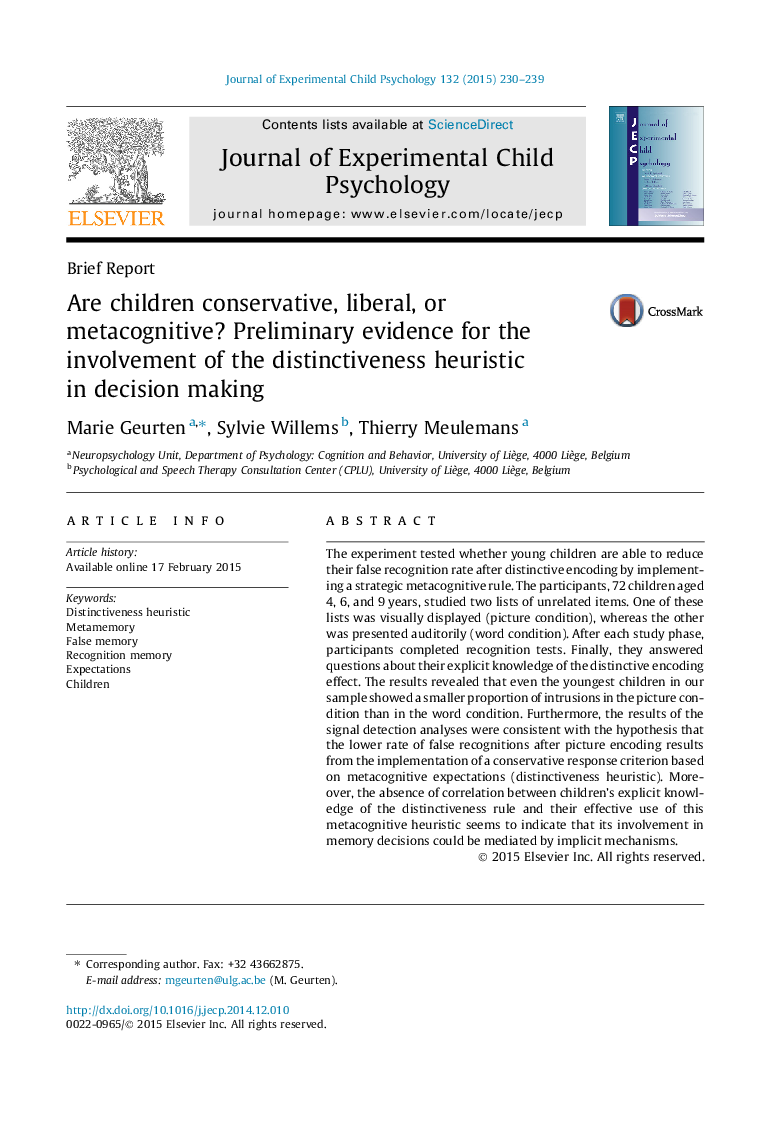| Article ID | Journal | Published Year | Pages | File Type |
|---|---|---|---|---|
| 917988 | Journal of Experimental Child Psychology | 2015 | 10 Pages |
•Children’s reduction of false recognitions after pictorial encoding is examined.•Children showed a more conservative response criterion for pictures than for words.•The findings are consistent with the distinctiveness heuristic hypothesis.•The involvement of the heuristic in memory decisions seems to occur implicitly.
The experiment tested whether young children are able to reduce their false recognition rate after distinctive encoding by implementing a strategic metacognitive rule. The participants, 72 children aged 4, 6, and 9 years, studied two lists of unrelated items. One of these lists was visually displayed (picture condition), whereas the other was presented auditorily (word condition). After each study phase, participants completed recognition tests. Finally, they answered questions about their explicit knowledge of the distinctive encoding effect. The results revealed that even the youngest children in our sample showed a smaller proportion of intrusions in the picture condition than in the word condition. Furthermore, the results of the signal detection analyses were consistent with the hypothesis that the lower rate of false recognitions after picture encoding results from the implementation of a conservative response criterion based on metacognitive expectations (distinctiveness heuristic). Moreover, the absence of correlation between children’s explicit knowledge of the distinctiveness rule and their effective use of this metacognitive heuristic seems to indicate that its involvement in memory decisions could be mediated by implicit mechanisms.
